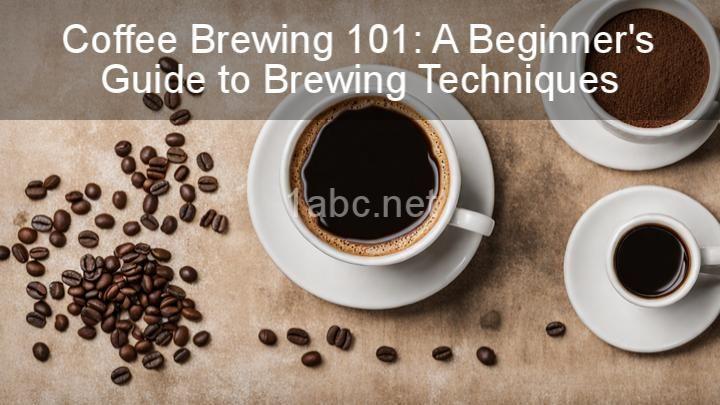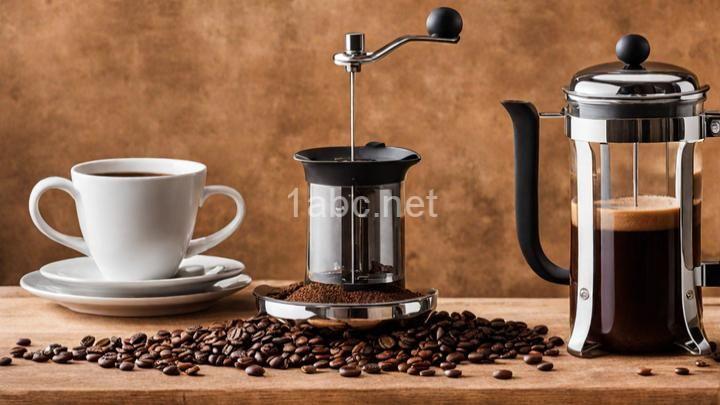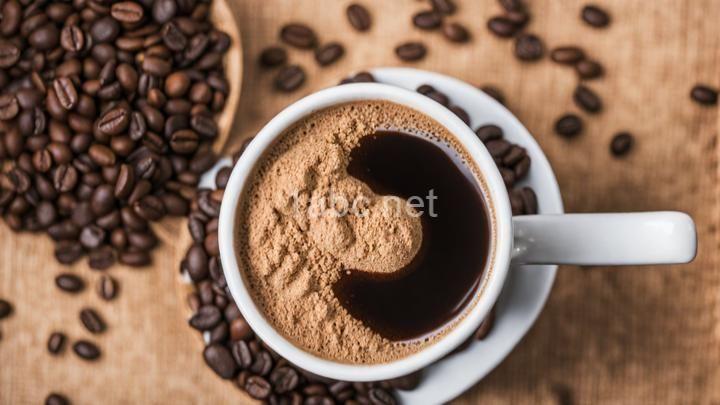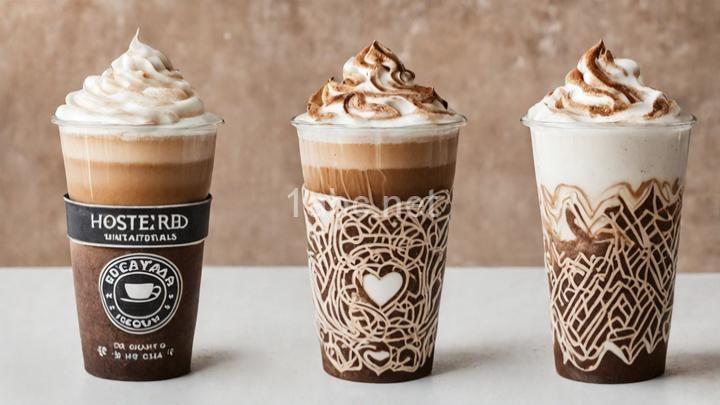Coffee Brewing 101: A Beginner's Guide to Brewing Techniques

Introduction:
Welcome to the world of coffee brewing! We are thrilled to embark on this journey with you and explore the fascinating art of brewing coffee. Whether you are a coffee enthusiast or just starting to discover the wonders of a freshly brewed cup, understanding different brewing techniques is crucial to achieving that perfect cup of coffee. In this beginner's guide, we will walk you through the essentials of coffee brewing, from understanding coffee beans to mastering various brewing methods. So grab your favorite mug and let's dive in!
I. Understanding Coffee Beans:
Before we delve into the intricacies of brewing, it is essential to understand the significance of choosing high-quality coffee beans. Coffee beans are the heart and soul of your cup, and selecting the right beans can greatly impact the flavor and aroma of your brew. There are two main types of coffee beans: Arabica and Robusta.
Arabica beans are known for their delicate flavors, complex profiles, and pleasant acidity. They generally have a smoother and more nuanced taste compared to Robusta beans. On the other hand, Robusta beans are bolder and more robust in flavor, often exhibiting a stronger and earthier taste. Understanding the characteristics of these beans will help you make an informed decision based on your personal preferences.
When selecting coffee beans, opt for freshly roasted beans that have a glossy appearance and a strong, inviting aroma. To maintain freshness, store your beans in an airtight container in a cool and dark place. Avoid pre-ground coffee as it tends to lose its freshness and flavor quickly.
II. Essential Equipment:
To embark on your coffee brewing journey, you will need a few essential tools. These include a grinder, scale, kettle, and a brewing apparatus suited to your preferred brewing method.
A grinder is crucial for achieving consistent grind size, which plays a significant role in extracting the desired flavors from your coffee. Invest in a burr grinder, as it allows for precise control over grind size and ensures uniformity. A scale is essential for accurately measuring coffee beans and water, contributing to the consistency of your brew. A gooseneck kettle with a thermometer will help you achieve the optimal water temperature for different brewing methods.
For beginners, there are budget-friendly options available for each piece of equipment. Look for entry-level grinders, digital scales, and affordable kettles to get started without breaking the bank.
III. Grind Size and Consistency:
Grind size is a crucial factor in brewing coffee. Different brewing methods require specific grind sizes to extract the desired flavors. A general rule of thumb is that the longer the coffee is in contact with water, the coarser the grind should be, and vice versa.
For brewing methods such as French press or cold brew, a coarse grind is suitable to prevent over-extraction. On the other hand, espresso requires a fine grind size to achieve a concentrated and intense flavor. Investing in a good grinder will allow you to adjust the grind size with precision.
Consistency is equally important when it comes to grinding coffee. Inconsistencies in grind size can result in an uneven extraction and affect the overall flavor of your brew. A burr grinder ensures a consistent grind, whereas blade grinders tend to produce uneven particles. Experiment with different grind sizes and adjust accordingly to find the perfect balance for your taste preferences.
IV. Brewing Methods:
Now that you have a good understanding of coffee beans, equipment, and grind size, let's explore some popular brewing methods.
A. Pour Over Method:
The pour-over method is a favorite among coffee enthusiasts for its simplicity and ability to highlight the unique flavors of the coffee beans. To brew using this method, you will need a pour-over dripper, filter paper, hot water, and freshly ground coffee.
Start by placing the filter paper in the dripper and rinsing it with hot water to remove any paper taste. This also preheats the brewing apparatus. Next, add your desired amount of coffee grounds to the filter. Begin pouring hot water slowly and in a circular motion, starting from the center and moving outwards. This allows for even extraction and ensures all the coffee grounds are saturated. Aim for a total brew time of around 3-4 minutes.
The ideal water temperature for pour-over brewing is between 195-205°F (90-96°C). Adjust the grind size according to your taste preferences, aiming for a medium-fine consistency. Experiment with pouring techniques, water-to-coffee ratios, and brewing times to find your perfect brew.
B. French Press Method:
The French press is a classic and beloved brewing method known for its rich and full-bodied coffee. It works on an immersion-style brewing technique, allowing the coffee grounds to steep in water for a specific period.
To brew using a French press, start by preheating the brewing vessel with hot water. Add your desired amount of coarsely ground coffee to the press. Pour hot water over the coffee, ensuring all the grounds are saturated. Gently stir the mixture to ensure even extraction. Place the lid on top but do not plunge yet. Let the coffee steep for around 4 minutes before slowly pressing the plunger down.
The recommended water-to-coffee ratio for French press brewing is 1:15, meaning one part coffee to 15 parts water. Adjust the ratio to suit your taste preferences. Experiment with steeping time and plunge technique to achieve the desired strength and flavor.
C. Aeropress Method:
The Aeropress is a versatile brewing device known for its ability to produce both espresso-like shots and regular coffee. It combines elements of immersion and pressure brewing, resulting in a clean and flavorful cup.
To brew with an Aeropress, start by placing a paper filter in the filter cap and rinsing it with hot water. Attach the filter cap to the brew chamber and place it on top of a sturdy mug. Add your desired amount of finely ground coffee to the chamber. Pour hot water over the coffee and stir gently to ensure all the grounds are fully saturated. After around 30 seconds, insert the plunger and gently press down until you hear a hissing sound.
Experiment with variables such as water temperature, steeping time, and grind size to find the perfect balance for your taste preferences. The Aeropress allows for endless experimentation, making it a favorite among coffee enthusiasts.
V. Water Quality:
Water quality plays a significant role in the taste of your brewed coffee. Using clean and filtered water is essential to avoid any impurities or unwanted flavors.
If you live in an area with hard water or water that has a strong taste, consider using filtered or bottled water for brewing. This will help enhance the flavors of your coffee and prevent any potential interference from minerals or contaminants.
VI. Troubleshooting:
As a beginner, it is common to encounter some obstacles while brewing coffee. Here are a few common issues and their solutions:
- Under-extraction: If your coffee tastes weak or lacks flavor, it may be under-extracted. Try using a finer grind size, increasing the brewing time, or adjusting the water-to-coffee ratio.
- Over-extraction: If your coffee tastes bitter or astringent, it may be over-extracted. Use a coarser grind size, decrease the brewing time, or adjust the water-to-coffee ratio.
- Uneven extraction: If your coffee tastes uneven or has a combination of weak and strong flavors, ensure that you are using a consistent grind size and that the water is evenly distributed during brewing.
Remember, brewing coffee is both a science and an art. Practice and experimentation are key to mastering the perfect cup. Don't be afraid to make adjustments and try different techniques until you find your preferred brewing method.
Conclusion:
Congratulations on completing this beginner's guide to coffee brewing! We hope this journey has provided you with valuable insights and skills to elevate your coffee brewing experience. Remember, the world of coffee is vast and ever-evolving, so don't hesitate to explore new brewing techniques, experiment with different beans, and continue refining your craft.
With the knowledge gained from this guide, you now have the tools to brew a delicious cup of coffee right in the comfort of your own home. So, grab your favorite beans, fire up your kettle, and embark on your coffee brewing adventures with confidence. Happy brewing!
FREQUENTLY ASKED QUESTIONS
What is Coffee Brewing 101: A Beginner's Guide to Brewing Techniques?
Coffee Brewing 101: A Beginner's Guide to Brewing Techniques is a comprehensive resource that teaches the basics of brewing coffee. It covers various methods such as:
- Drip Brewing: This is the most common method using a drip coffee maker. Water is poured over ground coffee in a filter, and the brewed coffee drips into a pot below.
- French Press: A French press involves steeping ground coffee in hot water, and then using a plunger to separate the coffee grounds from the liquid.
- Espresso: Espresso is made by forcing hot water through finely-ground coffee under high pressure. It produces a concentrated shot of coffee.
- Pour Over: In pour over brewing, water is manually poured over coffee grounds in a dripper. The coffee drips through a filter into a vessel below.
- Cold Brew: Cold brew is made by steeping coffee grounds in cold water for an extended period, typically 12-24 hours, resulting in a smooth and less acidic coffee.
The guide also covers important factors that affect the brewing process, including water temperature, coffee-to-water ratio, grind size, and brew time. By following the step-by-step instructions and experimenting with different techniques, beginners can discover their preferred brewing method and create delicious cups of coffee at home.
Who is this guide for?
This guide is for anyone who needs assistance or information on various topics. Whether you have a specific question or need general support, this guide is here to help you!
Why should I learn about coffee brewing techniques?
Learning about coffee brewing techniques can greatly enhance your coffee drinking experience. Here are a few reasons why you should consider learning more about it:
- Quality: Understanding different brewing techniques can help you extract the best flavors and aromas from your coffee beans. By using the right technique, you'll be able to brew a high-quality cup of coffee that is full-bodied and delicious.
- Customization: Each brewing technique offers a unique flavor profile. Whether you prefer a bold and strong cup or a more delicate and nuanced one, knowing different techniques allows you to customize your coffee according to your taste preferences.
- Variety: Learning about brewing techniques opens up a world of possibilities. From pour-over to French press, cold brew to espresso, you can explore a wide range of brewing methods and experiment with different coffee beans to discover new and exciting flavors.
- Cost-saving: Brewing your own coffee at home can be a cost-effective alternative to buying a cup from a coffee shop every day. By learning about brewing techniques, you can save money by making café-quality coffee in the comfort of your own home.
- Appreciation: Being knowledgeable about coffee brewing techniques allows you to appreciate the effort and skill that goes into brewing a great cup of coffee. You'll have a deeper understanding of the complexities involved, and it can enhance your overall coffee-drinking experience.
Overall, learning about coffee brewing techniques is a gateway to enjoying coffee on a whole new level. It empowers you to create your perfect cup of coffee and gain a deeper appreciation for the art and science behind brewing.
What equipment do I need to start brewing coffee?
To start brewing coffee, you will need the following equipment:
- Coffee maker or brewing device: This could be a drip coffee maker, a French press, a pour-over cone, an espresso machine, or any other preferred brewing method.
- Coffee grinder: It's recommended to grind your coffee beans just before brewing to maintain freshness and ensure a better taste. Burr grinders are preferred for a uniform grind size.
- Coffee beans: Choose high-quality coffee beans that suit your taste preferences. Whole beans usually provide a fresher taste compared to pre-ground coffee.
- Water kettle: A kettle with a gooseneck spout is ideal for pour-over brewing methods, while a regular kettle can work for other brewing methods.
- Water: High-quality filtered water is preferable for brewing good coffee.
- Coffee scale: Using a scale allows you to measure coffee and water accurately for consistent results.
- Timer: A timer can help you control the brew time and achieve the desired strength of your coffee.
- Coffee filters: If your chosen brewing method requires filters, make sure you have the appropriate ones on hand.
- Stirring utensil: A spoon or a paddle for stirring coffee grounds and water together.
- Coffee storage containers: To keep your coffee beans fresh, consider using airtight containers for proper storage.
These are the core equipment items needed for brewing coffee, but depending on your chosen brewing method, there may be additional accessories or tools that can enhance your brewing experience.


